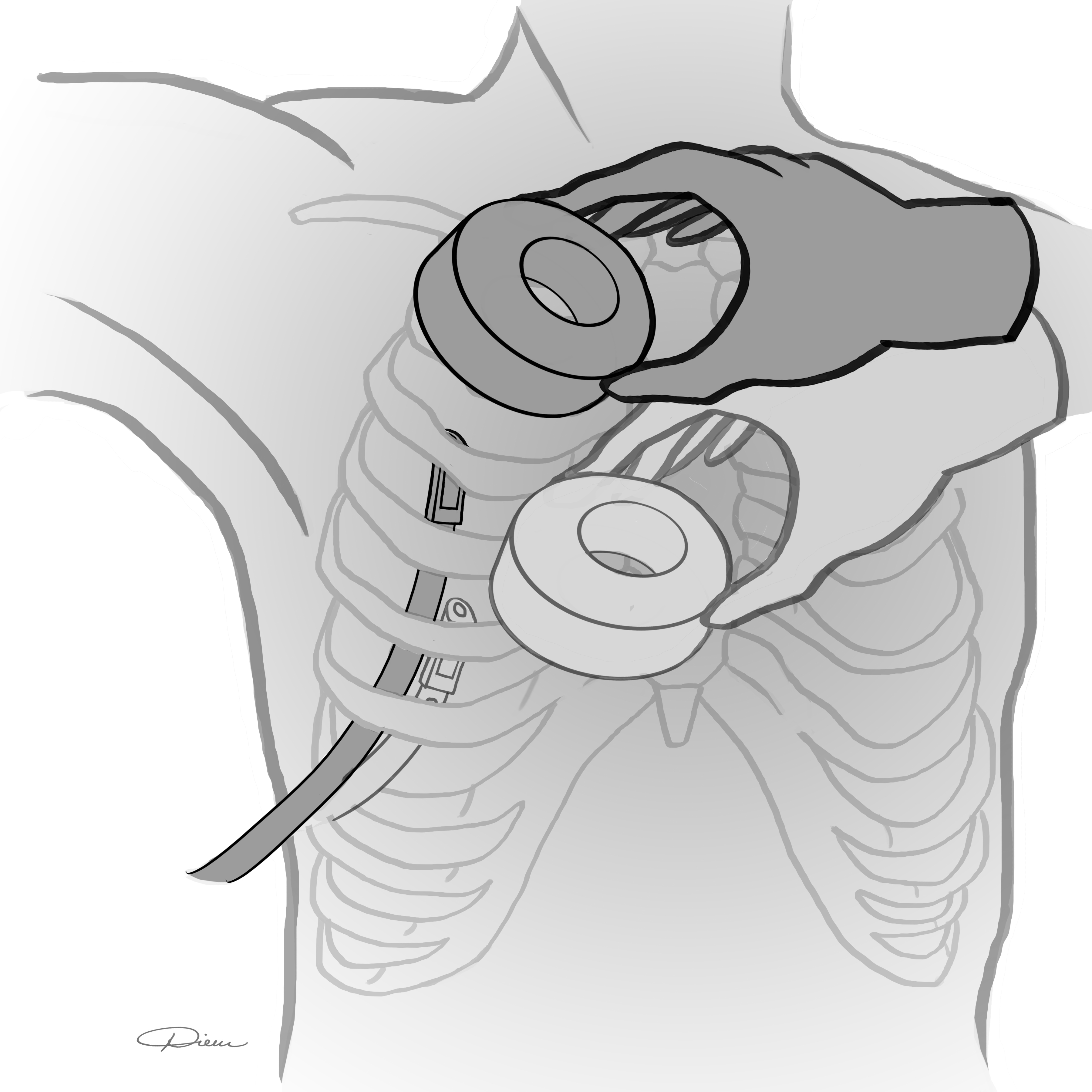D. Laan1, D. Vu1, M. Hernandez1, J. Aho1, H. Schiller1 1Mayo Clinic,General Surgery,Rochester, MN, USA
Introduction: Chest tubes can serve as life-saving adjuncts in trauma. Unfortunately, suboptimal positioning frequently complicates tube placement and can lead to impaired function. Magnets have been shown to successfully guide and direct small catheters, but this technology has never been shown to be efficacious in chest tube positioning. We sought to demonstrate, in a deceased porcine model, the utility of a 2-magnet system in directing the intra-thoracic position of a chest tube (Figure 1).
Methods: In recently deceased cross-bred domestic swine we tested magnetic positioning of a chest tube The operator held one magnet on the outside of the chest. The second magnet was introduced through a catheter to the distal tip of the chest tube. The operator was then tasked with moving the tube to distinct pre-marked intrathoracic locations under blinded conditions. This was achieved by taking advantage of the magnetic force between the two magnets. The experiment was video-recorded through an open sternotomy incision to determine success of tube positioning. Five chest tube positioning maneuvers were attempted with this system. An attempt at chest tube positioning with no magnet (standard of care) to premarked intrathoracic locations was attempted as a control.
Results:The chest tube positioning system was successful in directing a chest tube from one pre-marked location to another on 4 of 5 attempts. The system demonstrated an ability to move the tube in the cephalad-caudad axis and the anterior-posterior axis. Magnetic coupling between the 2 magnet ends was confirmed at a distance of 10cm in this model. The control chest tube with no magnet failed to navigate intrathoracically from one pre-marked location to the next with 0 of 5 attempts successful.
Conclusion:Positional flaws in chest tube placement are common. We demonstrate the 2-magnet system’s efficacy as an alternative to the traditional hand-guided method under simulated placement conditions. The pull between two magnets can be effective with up to 10cm separating magnet ends. Furthermore, we have shown with some reproducibility that a magnetic chest tube positioning system may be superior to the current standard of care technique of chest tube placement. Further study is needed to develop this emerging technology.
